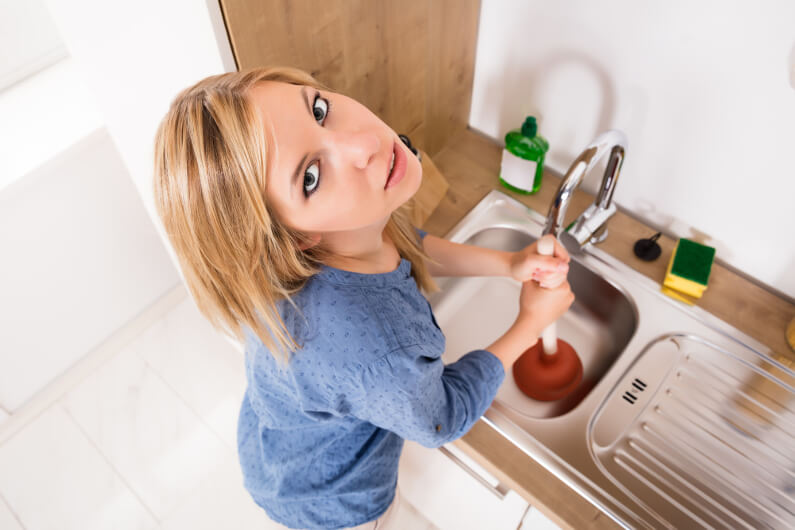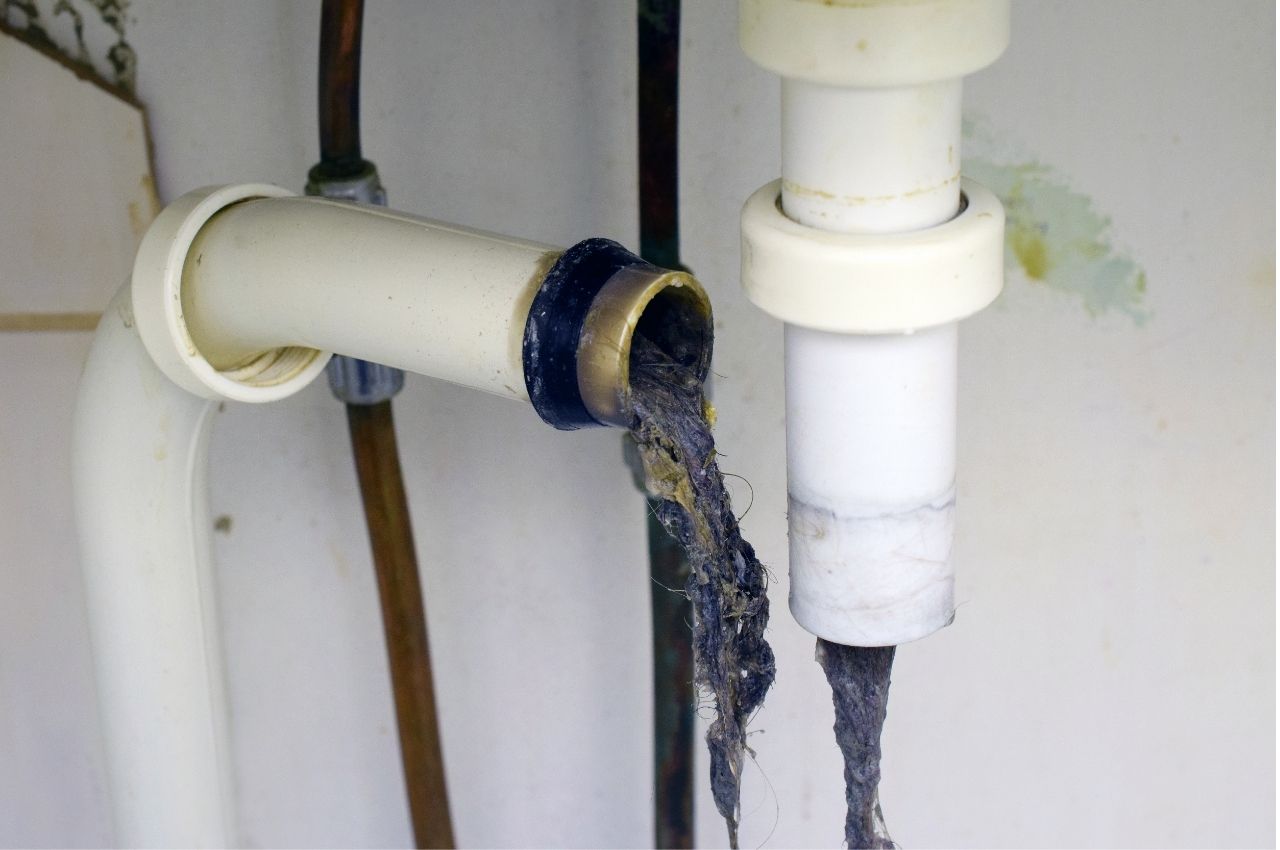5 Clever DIY Hacks for Unclogging Your Kitchen Sink
5 Clever DIY Hacks for Unclogging Your Kitchen Sink
Blog Article
Here down the page you'll find a bunch of amazing guidance relating to DIY Plumbing Fixes.

Clogged kitchen area sinks are just one of the most typical drain concerns homeowners deal with. As well as what's even more, it's a undesirable and also really uncomfortable sight. Picture going to the sink to do your meals as well as learning that the drain is blocked and also water can not move down easily.
Many clogged up water drainages are caused by food debris, fat, oil, as well as soap fragments. They obstruct the sink as well as make it hard for water to decrease the drain rapidly. While it is appealing to put a call through to the plumbing technicians, there are a few DIY hacks you could try initially before making that call.
In this post, we will be looking at five simple steps you might require to free your cooking area sink from clogs as well as conserve you from the discomfort and also embarrassment of taking care of a clogged up kitchen sink.
1. Use Boiling Water
When faced with a clogged up sink, the first thing you should try is to pour boiling water down the drain. That is about the most simple remedy to clogged sinks and drainages. Boiling water helps neutralize the particles and also particles causing the clog, especially if it's grease, soap, or oil particles, as well as in a lot of cases, it can flush it all down, and your sink will be back to normal.
Due to the fact that warm water can melt the lines and cause more damages, do not attempt this approach if you have plastic pipelines (PVC). You might desire to stick to making use of a bettor to get debris out if you make use of plastic pipelines.
Using this technique, activate the tap to see exactly how water moves after putting hot water down the tubes. If the obstruction lingers, attempt the procedure once again. The clog could be more relentless in some instances and also need more than just boiling water.
2. Perhaps it's the Garbage Disposal
In many cases, the clog may be due to a blockage in the disposal. Use pliers rather.
If this does not function, you can check out the following option to unclog your cooking area sink.
3. Try a Plunger
You can try using a plunger if the problem is not from the garbage disposal. Plungers are conventional residence devices for this event, as well as they can be available in useful if you use them properly. A flat-bottomed bettor is most suitable for this, yet you can make do with what you have is a toilet bettor.
Comply with the following straightforward actions to utilize the plunger properly:
Secure the drain with a dustcloth as well as fill the sink with some warm water
Place the plunger ready over the drain and also begin plunging
Check to see if the water runs easily after a couple of dives
Repeat the process till the drainage is complimentary
4. Sodium Bicarbonate and also Vinegar
In contrast to making use of any type of form of chemicals or bleach, this technique is more secure and not unsafe to you or your sink. Baking soda as well as vinegar are daily residence things used for lots of various other points, and also they can do the technique to your kitchen area sink.
Firstly, eliminate any type of water that is left in the sink with a mug.
Then put a great amount of baking soft drink away.
Pour in one mug of vinegar.
Seal the drain opening as well as allow it to go for some minutes.
Pour warm water down the drain to dissolve various other stubborn residue and also bits.
Following this easy method could suffice, as well as you can have your kitchen sink back. Repeat the procedure as long as you deem essential to free the sink of this particles completely.
5. Use a Hanger
Making use of a cord towel wall mount or a plumber's snake if you have one can do the method. All you need do is correct the alignment of the hanger to go down the drain while you meticulously pick out the fragments causing the clog.
Run warm water down the drain hereafter to see exactly how successful you were.
Final Words
Attempting these few techniques can save you the costs of having a plumber check it. In numerous cases, a plumber is what we require. In cases where you locate it tough to unclog the sink even after attempting all these approaches, it might be time to leave it to the specialists.
Contact specialist plumbing companies to repair your water drainage problems and various other various family plumbing requirements.
Clogged kitchen sinks are one of the most common water drainage issues homeowners deal with. Envision going to the sink to do your dishes and also finding out that the drain is clogged as well as water can not flow down quickly.
They obstruct the sink and make it hard for water to go down the drainpipe rapidly. When encountered with a clogged up sink, the first thing you ought to attempt is to pour boiling water down the drainpipe. Boiling water aids counteract the fragments and particles creating the obstruction, specifically if it's oil, soap, or oil particles, and also in lots of situations, it can flush it all down, and also your sink will certainly be back to normal.
How to Unclog a Kitchen Sink
Take the Plunge
Start your efforts by plunging. Use a plunger with a large rubber bell and a sturdy handle. Before getting to work on the drain, clamp the drain line to the dishwasher. If you don t close the line, plunging could force dirty water into the dishwasher.
Fill the sink with several inches of water. This ensures a good seal over the drain.
If you have a double sink, plug the other drain with a wet rag or strainer.
Insert the plunger at an angle, making sure water, not air, fills the bell.
Plunge forcefully several times. Pop off the plunger.
Repeat plunging and popping several times until the water drains.Clean the Trap
The P-trap is the curved pipe under the sink. The trap arm is the straight pipe that attaches to the P-trap and runs to the drain stub-out on the wall. Grease and debris can block this section of pipe. Here s how to unclog a kitchen sink by cleaning out the trap:
Remove as much standing water from the sink as possible.
Place a bucket under the pipe to catch the water as it drains.
Unscrew the slip nuts at both ends of the P-trap. Use slip-joint pliers and work carefully to avoid damaging the pipes or fasteners.
If you find a clog, remove it. Reassemble the trap.
If the P-trap isn t clogged, remove the trap arm and look for clogs there. Run the tip of a screwdriver into the drain stub-out to fetch nearby gunk.Spin the Auger
With the trap disassembled, you re ready to crank the auger down the drain line.
Pull a 12-inch length of cable from the auger and tighten the setscrew.
Insert the auger into the drain line, easing it into the pipe.
Feed the cable into the line until you feel an obstruction. Pull out more cable if you need to.
If you come to a clog, crank and push the cable until you feel it break through. The cable will lose tension when this happens.
Crank counterclockwise to pull out the cable, catching the grime and debris with a rag as the cable retracts.

I ran across that content about Common Household Plumbing Issues when doing a search on the web. Are you aware of anybody else who is curious about the topic? Why not share it. Many thanks for taking the time to read it.
Preventative solutions offered. Report this page